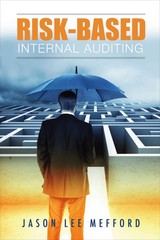Answered step by step
Verified Expert Solution
Question
1 Approved Answer
(TCO2) A company paid cash for employee wages. This transaction ________________. (Points: 4) increased cash and increased expenses. increased cash and decreased expenses. decreased cash
(TCO2) A company paid cash for employee wages. This transaction ________________. (Points: 4) increased cash and increased expenses. increased cash and decreased expenses. decreased cash and increased expenses. decreased cash and decreased revenues. 5. (TCO2) The owner of a business paid cash from his personal checking account to purchase an automobile for his personal use. This transaction _____________. (Points: 4) increased a liability account and increased liabilities. decreased cash and increased expenses. increased assets and increased owners equity. is not a transaction recognized by the business. 6. (TCO2) A trial balance has which of the following features? (Points: 4) totals for balance sheet accounts only totals for income statement accounts only totals for all accounts listed in the general ledger both A and B are correct 7. (TCO3) OConnor Company purchased supplies totaling $21,600. By year end, $9,300 of supplies were still on hand. How much supplies expense should OConnor recognize? (Points: 4) $9,300 $12,300 $21,600 $0 8. (TCO3) Hamilton Tool and Die Company purchased $72,000 of equipment with an estimated service life of 4 years. The equipment will be worth $4,000 at the end of its life. The annual amount of depreciation on this equipment is: (Points: 4) $17,000. $18,000. $19,000. $0. 9. (TCO5) Which of the following items will cause a difference between the book balance and the bank balance? (Points: 4) deposits in timing bank collections canceled checks outstanding voided checks 10. (TCO5) Under the allowance method, the entry to write off a $2,600 uncollectible account includes a(n) : (Points: 4) increase to accounts receivable for $2,600. increase to uncollectible-account expense for $2,600. increase to allowance for uncollectible accounts for $2,600. decrease to Accounts Receivable for $2,600. 11. (TCO4) In a merchandising companys income statement, which of the following would NOT be included in the Cost of Goods Sold calculation? (Points: 4) shipping costs from the manufacturer to the merchandiser sales commissions returns of inventory purchases sales taxes on inventory purchases, as shown on the invoices 12. (TCO4) Unlike the periodic inventory system, the perpetual inventory system: (Points: 4) does not require a physical count of the ending inventory. includes only the inventory purchased for cash. provides a continuous record of inventory on hand. is not required by GAAP. 1. (TCO4) When inventory prices are falling, the LIFO costing method will generally result in a: (Points: 4) lower gross profit than under fifo. higher gross profit than under fifo. lower inventory value than under fifo. lower owners equity balance than under FIFO. 2. (TCO6) Which of the following should be included in the cost of land? (Points: 4) construction cost of a parking lot landscaping real estate brokerage commission lighting 3. (TCO6) Which of the following statements is false? (Points: 4) depreciation is a process of subjective valuation. depreciation is a non-cash expense. accumulated depreciation represents a growing amount of cash to be used to replace the existing asset. accumulated depreciation is that portion of a plant assets cost that has been recorded previously as an expense. 4. (TCO6) On January 10, 2007, Maxim Corporation acquired equipment for $124,000. The estimated life of the equipment is 3 years or 24,000 hours. The estimated residual value is $10,000. What is the depreciation for 2007, if Baldwin Corporation uses the asset 9,100 hours and uses the units-of-production method of depreciation? (Points: 4) $43,225 $47,017 $41,333 $38,000 5. (TCO6) The journal entry to record accrued interest on a short-term note payable must include an increase to: (Points: 4) interest expense and a increase to notes payable. interest expense and a increase to interest payable. interest payable and a decrease to interest expense. interest payable and a increase to notes payable. 6. (TCO7) How does an investment of cash in a corporation affect the corporations balance sheet? (Points: 4) it increases assets and decreases stockholders equity. it increases assets and increases stockholders equity. it increases assets and increases liabilities. it increases assets and decreases liabilities. 7. (TCO7) The number of shares of treasury stock plus the number of shares outstanding equals the number of shares: (Points: 4) authorized that have not been issued. authorized. issued. issued that have not been reacquired by the company. 8. (TCO2) Consider the following transactions: I. Owners invested $8,000 cash to begin the business II. Provided services for cash, $6,000 III. Provided services on account, $4,000 IV. Paid cash for expenses, $7,500 How much cash does the business have? (Points: 4) $2,500 $4,500 $6,500 $10,500 3. (TCO 1) The income statement for the OverUnder Company for the year ended December 31, 2007, appears below. Sales 670,000 Costs of goods sold 390,000 Gross profit 280,000 Expenses 180,000* Net income $100,000 *Includes $25,000 of interest expense and $20,000 of income tax expense. Additional information: a. Common stock outstanding on January 1, 2007, was 50,000 shares. On July 1, 2007, 10,000 more shares were issued. b. The market price of OverUnder's stock was $18 at the end of 2007. c. Cash dividends of $35,000 were paid, $5,000 of which were paid to preferred stockholders. Part 1: Compute the following ratios for 2007 (show your work): a. Earnings per share. b. Price-earnings. c. Times interest earned. Part 2: Please explain the meaning of these ratios and the results you have calculated
Step by Step Solution
There are 3 Steps involved in it
Step: 1

Get Instant Access to Expert-Tailored Solutions
See step-by-step solutions with expert insights and AI powered tools for academic success
Step: 2

Step: 3

Ace Your Homework with AI
Get the answers you need in no time with our AI-driven, step-by-step assistance
Get Started


